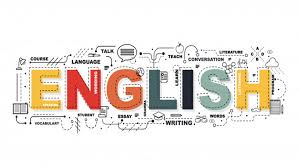
Table of Contents
What is Grammar?
Grammar is the set of rules and principles that dictate how words are structured and combined to form sentences in a language. It covers various aspects, including:
- Syntax: The arrangement of words in a sentence to convey meaning. For example, the typical word order in English is subject-verb-object (“She eats an apple”).
- Morphology: The study of the structure and form of words, including how prefixes, suffixes, and root words are used to create different forms of a word (e.g., “run,” “running,” “ran”).
- Punctuation: Using symbols like periods, commas, and question marks to clarify meaning and separate ideas in written language.
- Phonology: The sound system of a language and how sounds are organized and used.
- Semantics: The meaning of words and sentences, ensuring that the language conveys the intended message.
Grammar is the foundation for effective communication, helping us construct clear and understandable sentences that others can interpret accurately. Each language has its own unique set of grammatical rules.
What is Grammar and its Importance
Grammar is the set of rules and guidelines that govern the structure of a language, determining how words and phrases are organized to form sentences. It includes several components:
- Syntax: The arrangement of words and phrases to create well-formed sentences.
- Morphology: The study of the structure and form of words, including prefixes, suffixes, and root words.
- Punctuation: The use of symbols (like commas, periods, question marks) to clarify meaning in written language.
- Phonology: The sound system of a language, including the rules for combining sounds.
- Semantics: The meaning of words and sentences.
Importance of Grammar
- Clarity and Precision: Grammar ensures that sentences are clear and convey the intended meaning. Without proper grammar, sentences can become ambiguous or confusing.
- Effective Communication: Good grammar allows people to communicate more effectively. It helps listeners or readers understand the message without misinterpretation.
- Professionalism: In both spoken and written communication, proper grammar is often associated with professionalism and credibility. Poor grammar can undermine your authority and message.
- Language Learning: Understanding grammar is essential for learning a new language. It provides the framework for constructing sentences and expressing ideas accurately.
- Cultural and Social Connection: Grammar helps maintain the consistency and integrity of a language, allowing people within a culture or society to connect and share ideas.
- Logical Thinking: Learning grammar can improve logical thinking and analytical skills, as it involves understanding and applying a set of rules systematically.
English Grammar Syllabus
An English grammar syllabus typically covers a wide range of topics, designed to build a solid foundation in understanding and using the language correctly. Below is a general outline of what an English grammar syllabus might include, organized by major topics:
1. Parts of Speech
- Nouns: Types (proper, common, collective, abstract), countable and uncountable nouns, plural forms, possessive forms.
- Pronouns: Personal, possessive, reflexive, relative, demonstrative, interrogative, and indefinite pronouns.
- Adjectives: Types (descriptive, quantitative, demonstrative, possessive), degrees of comparison.
- Verbs: Main verbs, auxiliary verbs, transitive and intransitive verbs, regular and irregular verbs, verb forms.
- Adverbs: Types (manner, place, time, frequency, degree), formation, comparison of adverbs.
- Prepositions: Types (time, place, direction), prepositional phrases.
- Conjunctions: Coordinating, subordinating, and correlative conjunctions.
- Interjections: Definition, usage in sentences.
2. Sentence Structure
- Sentence Types: Declarative, interrogative, imperative, exclamatory.
- Sentence Elements: Subject, predicate, object, complement.
- Phrases and Clauses: Noun phrases, verb phrases, adjective phrases, adverbial phrases; independent and dependent clauses.
3. Tenses
- Present Tense: Simple, continuous, perfect, perfect continuous.
- Past Tense: Simple, continuous, perfect, perfect continuous.
- Future Tense: Simple, continuous, perfect, perfect continuous.
- Sequence of Tenses: Agreement of tenses in sentences.
4. Voice
- Active Voice: Subject performs the action.
- Passive Voice: Subject receives the action, formation, and usage.
5. Direct and Indirect Speech
- Direct Speech: Quoting the exact words spoken.
- Indirect Speech: Reporting what someone said without quoting them exactly, rules for converting direct speech to indirect speech.

6. Modals and Auxiliary Verbs
- Modals: Can, could, may, might, shall, should, will, would, must, ought to, etc.
- Auxiliary Verbs: Be, have, do, and their uses in different tenses.
7. Conditionals
- Zero Conditional: General truths.
- First Conditional: Real future possibility.
- Second Conditional: Unreal or unlikely present or future situations.
- Third Conditional: Unreal past situations.
- Mixed Conditionals: Combinations of different conditional forms.
8. Articles
- Definite Article: “The” and its uses.
- Indefinite Articles: “A” and “An,” their uses and exceptions.
- Omission of Articles: When articles are not used.
9. Punctuation
- Full Stop/Period: Use in sentences.
- Comma: Listing, separating clauses, introductory elements.
- Semicolon and Colon: Connecting related sentences, lists.
- Quotation Marks: Direct speech, titles.
- Apostrophe: Possessives, contractions.
- Exclamation Mark and Question Mark: Use in sentences.
- Parentheses and Dashes: Additional information, interruptions.
10. Subject-Verb Agreement
- Basic Rules: Singular vs. plural subjects and verbs.
- Complex Cases: Collective nouns, compound subjects, indefinite pronouns.
11. Pronoun-Antecedent Agreement
- Basic Agreement: Pronouns must agree in number and gender with their antecedents.
- Complex Cases: Collective nouns, indefinite pronouns, compound antecedents.
12. Common Syntactical Structures
- Parallelism: Ensuring similar sentence elements are balanced.
- Modifiers: Correct placement of adjectives and adverbs.
- Dangling Modifiers: Avoiding and correcting misplaced modifiers.
- Sentence Fragments and Run-Ons: Identification and correction.
13. Word Formation
- Affixation: Prefixes, suffixes, infixes, and their effects on meaning.
- Compounding: Creating new words by combining existing ones.
- Conversion: Changing word classes without adding affixes.
14. Common Errors
- Confusing Words: Their vs. There, Affect vs. Effect, etc.
- Redundancies: Eliminating unnecessary words.
- Overused Words: Finding alternatives for commonly overused terms.
15. Advanced Topics (Optional)
- Ellipsis: Omitting parts of a sentence while retaining meaning.
- Inversion: Reversing normal word order for emphasis or questions.
- Subjunctive Mood: Expressing wishes, hypotheticals, and demands.
- Relative Clauses: Defining and non-defining clauses, use of “who,” “whom,” “which,” “that.”
16. Practical Applications
- Writing: Essays, letters, reports, and other forms of writing using correct grammar.
- Speaking: Grammar in oral communication, avoiding common mistakes.
- Editing and Proofreading: Identifying and correcting grammatical errors in written work.
This syllabus can be tailored depending on the level of learners (beginner, intermediate, advanced) and specific goals (academic, professional, or general English proficiency).




